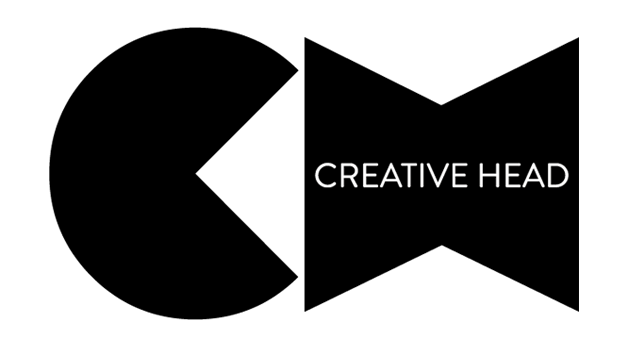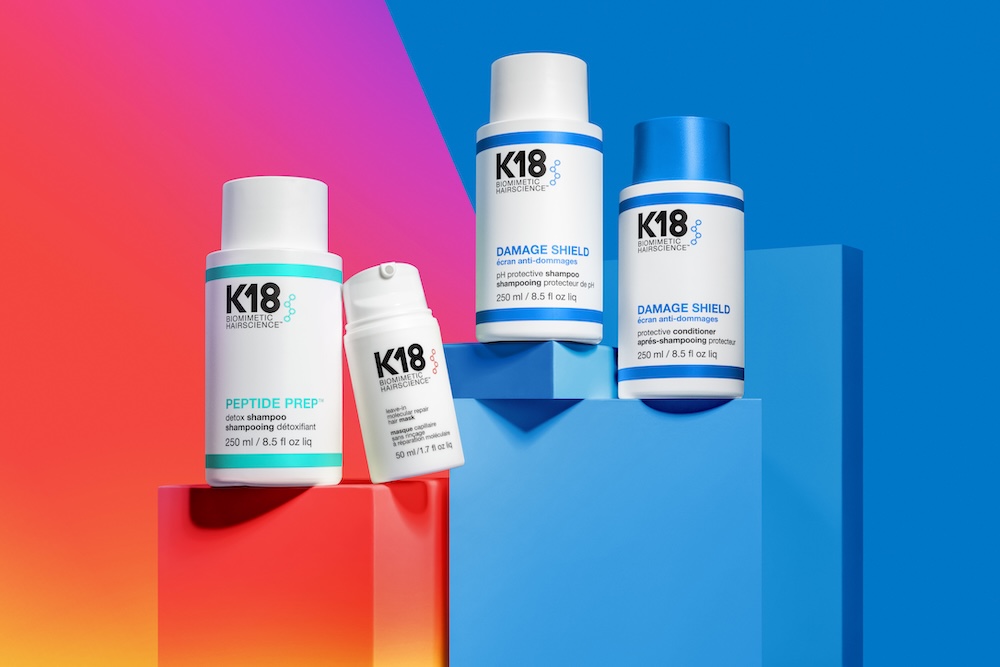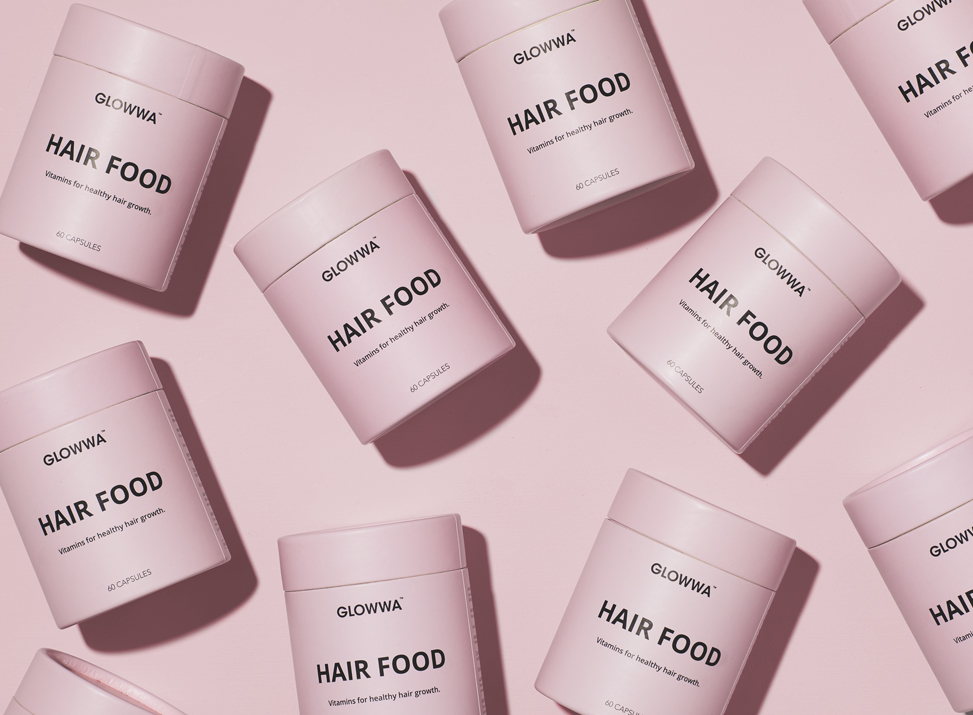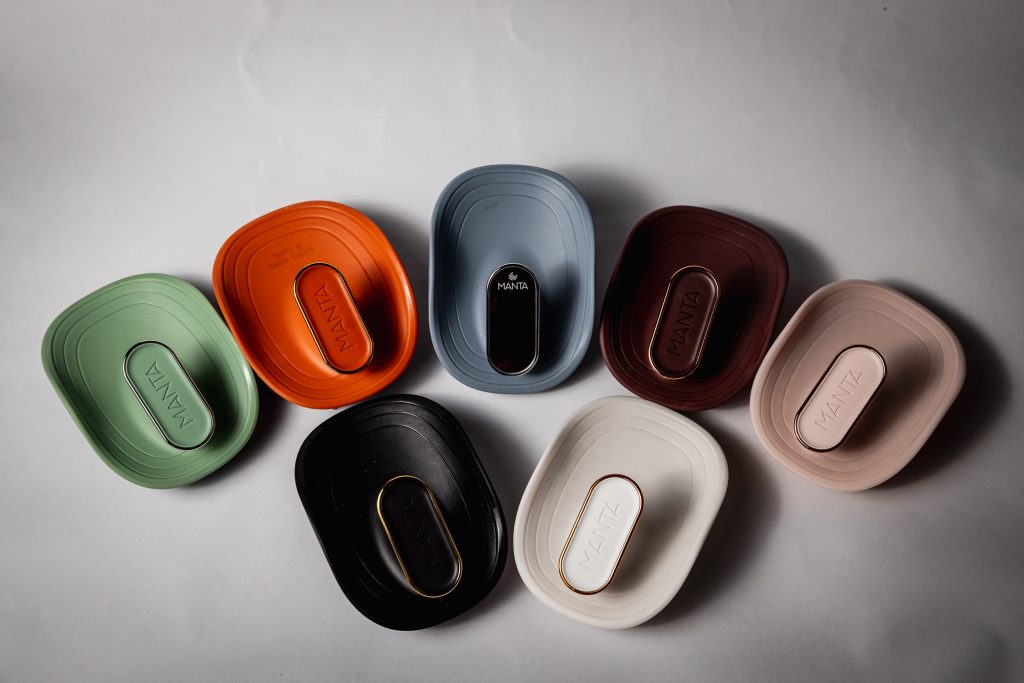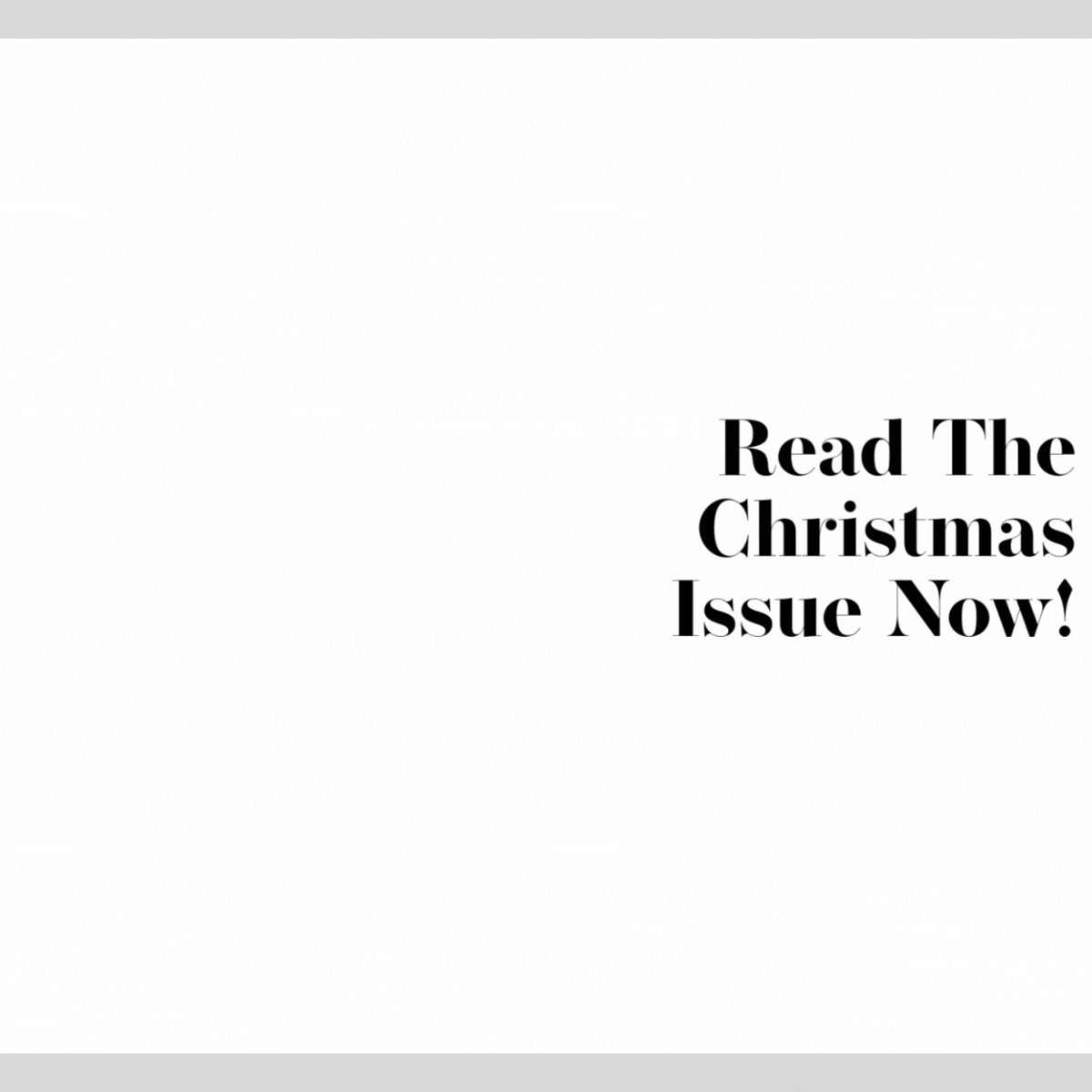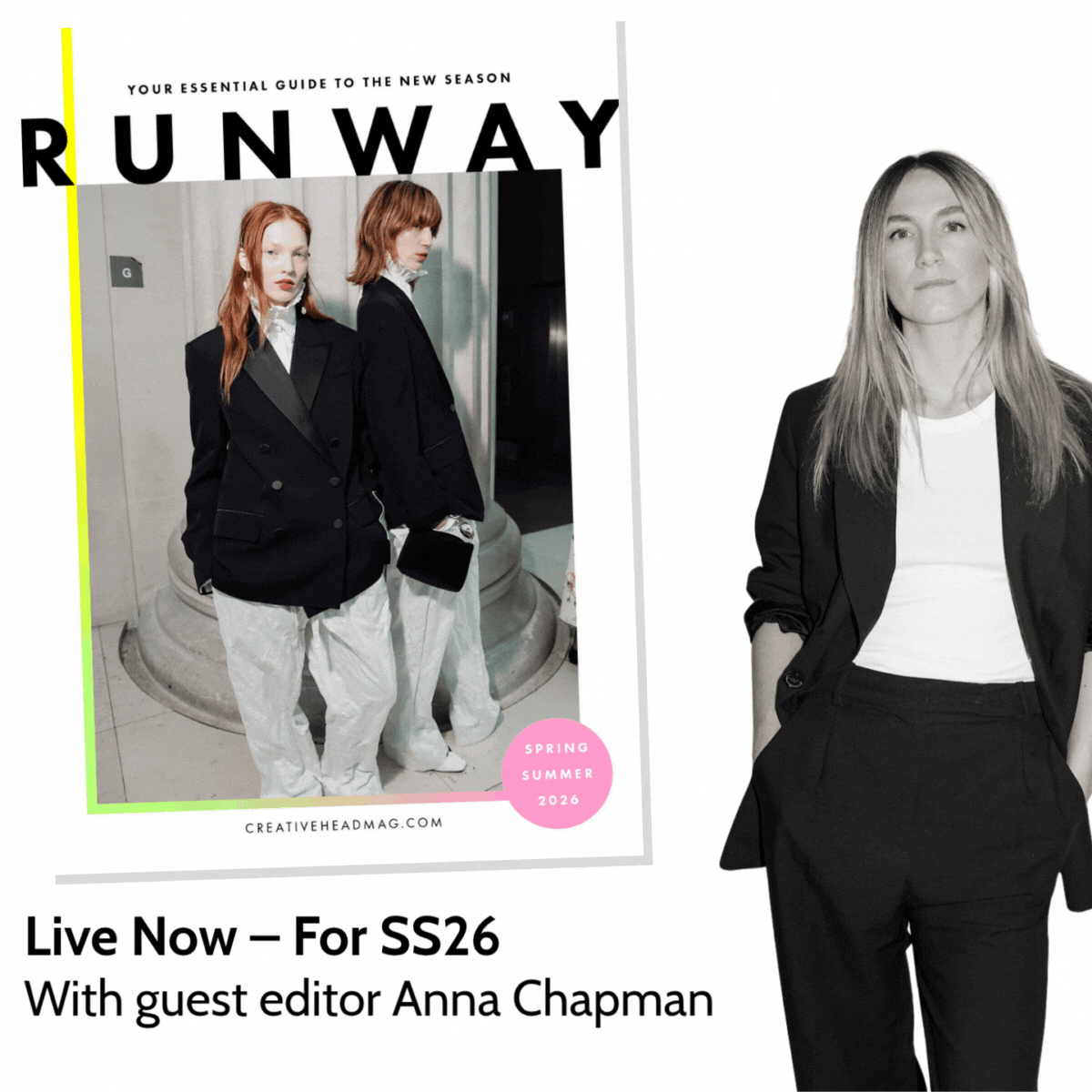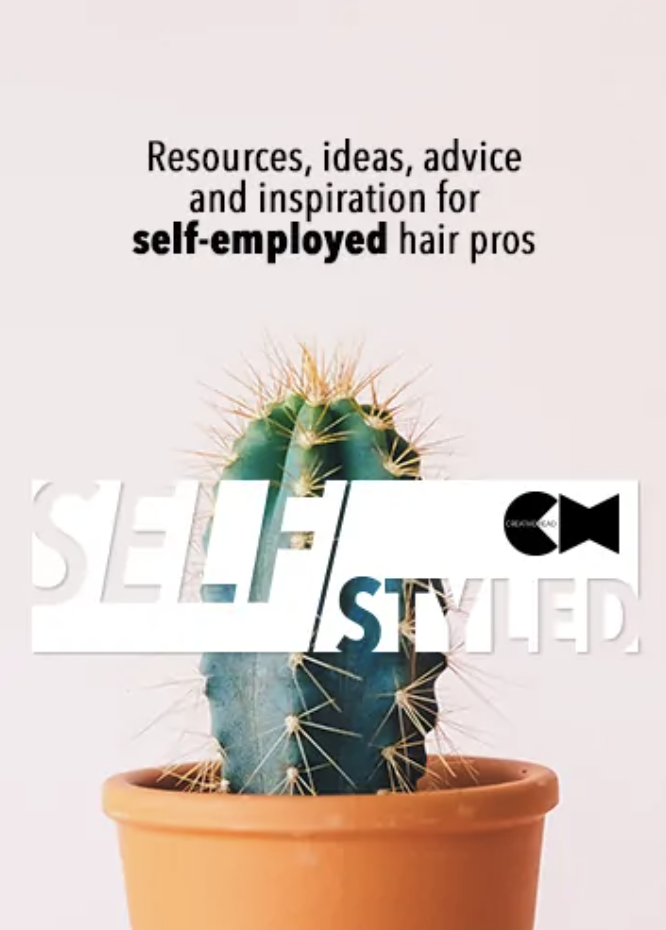“We Didn’t Have Access To The Tools We Deserved”
What started as a side-hustle to help friends get their hands on Japanese hair grips is now a thriving business endorsed by the world’s top session stylists. Creative HEAD meets Anna Chapman, founder of Session Kit
by C | CONVERSATIONS
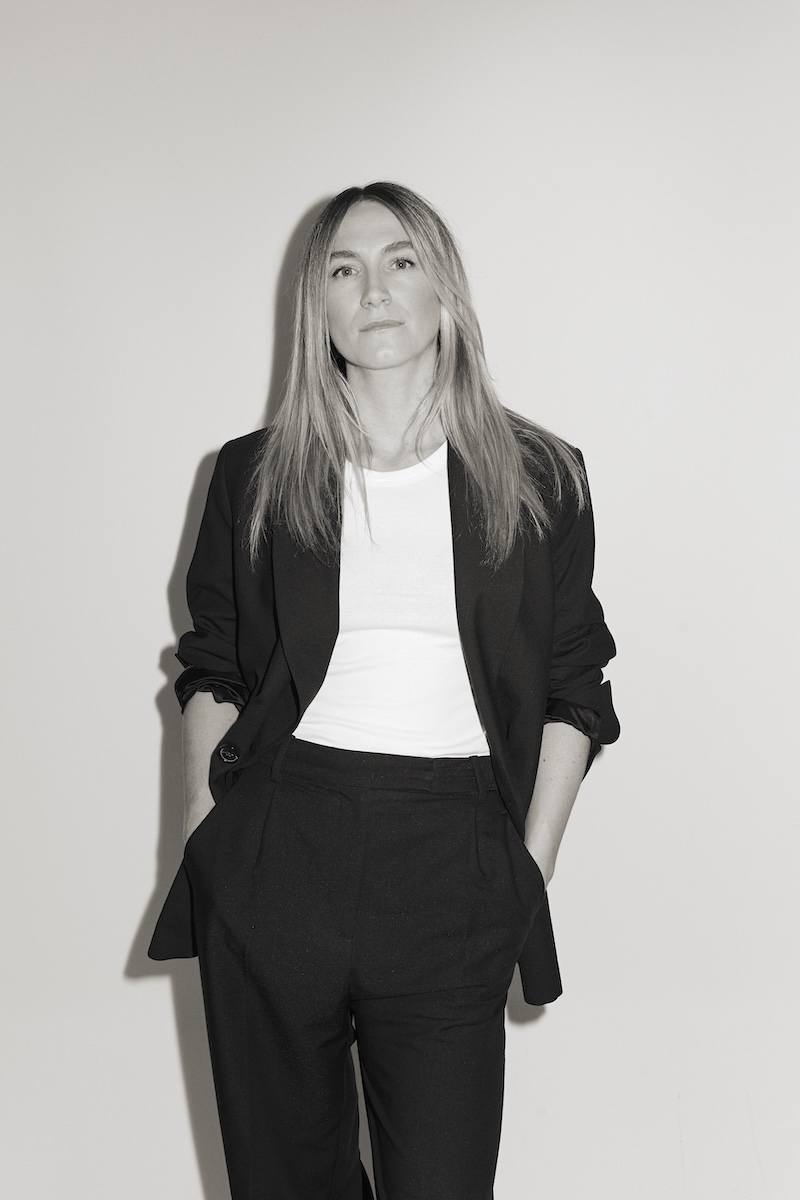
Anna Chapman
It was when she found herself on her hands and knees on the floor, frantically searching for the Japanese-made hair grips discarded by Eugene Souleiman and his team after a Fashion Week show, that Anna Chapman thought, ‘It shouldn’t have to be like this.’
The up-and-coming young session stylist had worked incredibly hard to establish herself on the fashion circuit, sacrificing free time and a lifetime of savings to fund opportunities to assist artists like Duffy, Sam McKnight and Anthony Turner. Now, her career ambitions were at risk of being undone by the contents of her kitbag.
“It was the first time I’d worked on Eugene’s team,” recalls Chapman, “and they were all using the same grips. They didn’t look like anything I’d ever seen before – very flat and thin and a metallic blue colour – but they were so strong and held the hair so securely in place, it was unbelievable. As I did more shows, I noticed that all the top session stylists were using them and yet they simply weren’t available to buy in the UK. To me, that was crazy. London is one of the world’s leading cities for fashion and beauty, yet we didn’t have access to the tools we deserved.”

Session Kit sells the high-performance tools you need in the session world
Chapman managed to track down the Japanese grips manufacturer and ordered 100 boxes, thinking that all her session friends would want to buy them from her. “It wasn’t about making money, I just wanted to do this favour for my friends and workmates,” she says. But things went crazy very quickly. Adam Reed bought some of Chapman’s pins and posted about them on his social media, tagging her, and suddenly hundreds of people were DMing Chapman wanting to buy the pins. “The demand was clearly there,” she recalls, “and I decided to make it my mission to ensure all professionals could have access.”
And so, the idea for Session Kit was born. Chapman had no prior experience of sourcing products, import taxes or retail language, but it was the long-standing relationships she’d built through her work in salons and session that spread the word and helped build the business very quickly. A major turning point came when she launched the Session Kit website. “That was huge!” she says. “Originally, I was only selling Japanese pins and grips, calculating weights manually, replying with shipping quotes and taking payments via bank transfer. Once the website launched, everything changed. Orders flew in, especially from international customers. It gave us space to expand our product range and streamline everything.”
Today, Session Kit comprises an edit of the most sought-after hair tools in the world – primarily pins, grips, brushes, tongs and combs but also ‘extras’ like hair elastic, face shields and Geisha hair padding (“You can use it to create any shape you need again and again. It’s pure genius!” says Chapman). Nothing makes it into the shop unless it’s been rigorously tested by Chapman and the Session Kit community – and it’s this authenticity that keeps the business so relevant and successful, not to mention earning plaudits (and actual orders) from the likes of Guido, Gary Gill and [Mr Original Japanese Grip User] Eugene Souleiman. “What’s humbling is that none of them asked for free products!” Chapman smiles. “Every purchase, testimonial and social post is done out of genuine care and belief in what Session Kit is trying to achieve.”
“If you want to succeed in session, which is a cut-throat world, having the right tools is fundamental. The difference between the pressure you’re under when you’re working backstage, compared to the salon, is insane”
Anna Chapman
Chapman originally trained in a salon in Portsmouth before joining Trevor Sorbie, first in Brighton and then in London, where she worked alongside Angelo Seminara. It was at this point in her career that Chapman cemented her plans to become a session stylist, assisting legendary names (and establishing a close working rapport with Anthony Turner in particular), and learning the realities of session work: how it differs from salon life, how to speak the session industry’s language and – of course – understanding what she needed in her kitbag.
“If you want to succeed in session, which is a cut-throat world, having the right tools is fundamental,” says Chapman. “The difference between the pressure you’re under when you’re working backstage, compared to the salon, is insane. Yes, I’ve done 10 clients back-to-back, 45-minute haircuts, I know what it’s like. But when you’re backstage at Fashion Week and you’ve got 50 models who all need a slick pony and you’re crammed like sardines in this tiny space – that’s when you need a brush that gathers all the hair within seconds. You need your tools to perform at the highest level.”
In the early 2010s Chapman was part of a small and tight-knit group of stylists who were primarily based in salons but were also building impressive reputations in the session world – her peers included Richard Phillipart, Kim Rance and Jonathan de Francesco (whose Phantom Towels range is now stocked in Session Kit). Opportunities to straddle both worlds are more commonplace now, but Chapman is surprised it took this long.
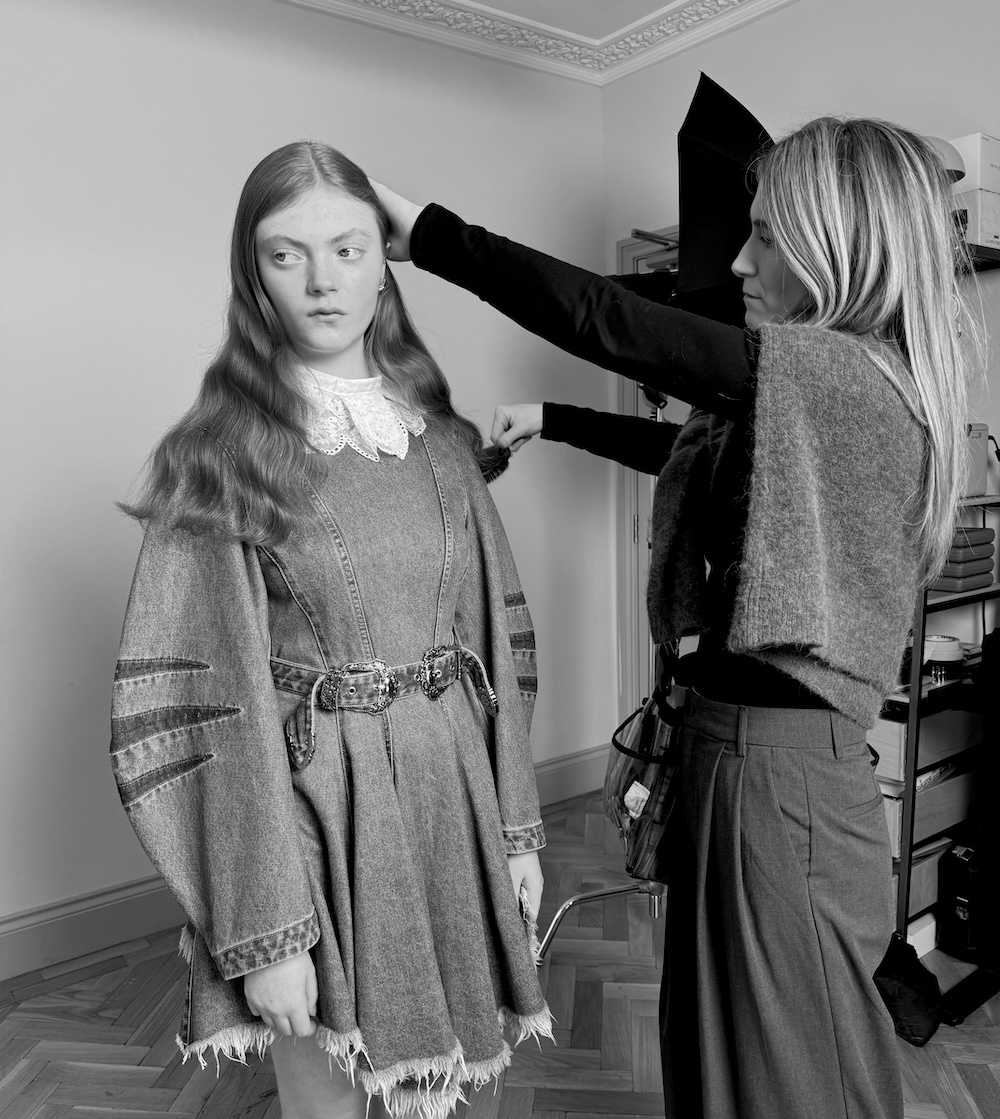
Chapman is a successful session stylist in her own right
“What’s crazy is that people like Eugene and Guido really struggle to find good assistants because the work they do is so technical and there are so many session stylists who don’t have that background – what you’ve got to remember this is an international game and the standard of training in different countries can vary massively. Those guys loved to have cutters on their team because it came in very useful at Men’s Fashion Week, for example, and I was always valuable when there was some kind of crazy haircut that Guido would want to do because he actually was allowed to transform the models he worked with. It counted for a lot that I was based at Sorbie’s because they knew which salons did the best training and delivered the stylists with the highest skill sets.”
Chapman clearly remembers those days when she was a rookie session stylist. The high-pressure environments, how differently people talked about hair, having to learn the rules of working backstage. That’s why she’s created a course, Backstage Bootcamp, that genuinely prepares hairdressers for working in the session world.
“Session Kit was never just about selling products, it’s always been about supporting an empowering the professionals behind the craft”
Anna Chapman
The course is taught by Alfie Sackett, who was Eugene Souleiman’s first assistant for over three years and who is now represented by one of the industry’s top agencies. “That matters to me,” says Chapman, “because at Session Kit, everything we do is rooted in integrity and substance. Too often, education in this space is offered by professionals who haven’t fully walked the path themselves. Our educators are professionals who’ve not only excelled in their careers but have also experienced the full assistant-to-stylist journey – and are ready to help others do the same.”
For Chapman, education is just as important as the tools she sells. “Both are essential to the future of our industry,” she explains. “Session Kit was never just about selling products, it’s always been about supporting and empowering the professionals behind the craft. I built it with the same passion I bring to every job I do, and with the belief that our industry deserves access to the very best, whether it’s tools, education, or community. My journey hasn’t always been easy, but it’s taught me that with resilience, purpose, and a love for what you do, anything is possible. I’m so proud of what Session Kit has become, and even more excited for what’s still to come.”
How has the session industry changed compared to, say, 10 years ago?
It’s much more business-focused. In the Nineties designers like Alexander McQueen created pure art and drama on the runway. The focus was on showcasing the designer’s creativity, which, in turn, generated hype, press coverage and ultimately helped sell collections. Today, that artistic freedom has shifted for many brands. The emphasis is more commercial and collections are often tailored to what will sell, rather than purely expressing a creative vision. Creativity still exists, but it’s definitely less than it used to be.
Is Session Kit still unique in the market?
There are a few companies that have tried to replicate what Session Kit does and honestly, I take that as a compliment. But the truth is, I don’t focus on what others are doing. What sets Session Kit apart is our authenticity, community-driven approach and commitment to quality. We’re not just a store – we’re part of the industry we serve.
What qualities has it taken for you, as a working mum, to launch and run your own business?
Resilience and persistence. My daughter Rae was born in 2019, and COVID hit when she was just eight months old. Right when my career and Session Kit were gaining momentum, everything stopped. Not long after, my relationship broke down. I had to let Session Kit tick over while I focused on my session work. Many people told me I should consider returning to the salon so I could have structure routine to help with childcare. But I was determined not to lose everything I had worked so hard for and I’m proud to say I did it. I kept my career, kept the business, and bought a beautiful flat for me and Rae – and my new husband!
